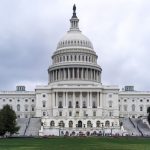The Federal Reserve’s Actions and How They Affect Consumers
Chairman Jerome Powell and the Federal Reserve have been keeping busy these days. With rate cuts, quantitative easing, and bond swaps, we are living in a real-life macroeconomics experiment. Luckily, after quite a few stress-tests in the past, the powers that be have a wide variety of monetary tools at their disposal. Let’s take a look at a few of them and how they might affect consumers.
Interest rate cuts
Interest rate cuts are usually the first tool in the Fed’s belt. A lot of people think that when the Fed cuts interest rates, it is immediately time to refinance their mortgage. But it is a bit more complicated than that. When the Fed cuts rates, it is lowering its “target rate”, which is the guideline for the actual rate that banks charge each other on overnight reserve loans. Many other rates move very closely with this target rate. The Fed’s priorities when it comes to rate cuts are price stability (current inflation target of 2%) and steady economic growth. Despite very low employment over the past few years, inflation has remained stubbornly below that target. Mortgage rates, however, tend to track closely with treasury yields. As people flock to safe-haven assets like government securities, the yield drops, and so do the mortgage rates.
Quantitative Easing
On March 23rd, the Fed announced a suite of new programs designed to stabilize the markets and lessen the burden on consumers. One of them is a monetary policy called, quantitative easing. This is where the central bank begins to purchase assets and securities on the open market in order to increase the money supply, encourage investment, and prop up the market. This is an unprecedented action because they said they would begin purchasing assets with no limit or possible timetable. With the inflation rate reluctant to rise, quantitative easing just might be the catalyst for a change in that trend. The Fed just has to be cautious not to let that inflation run away from them. With that in mind, economic growth is key.
Bond swaps and liquidity facilities
In an effort to bring more liquidity to the market, the Fed just announced on Tuesday that they will be opening up a facility that allows foreign central banks to temporarily swap U.S. government bonds with cash. This gives those central banks who are unable to find trades on the open market the opportunity to temporarily liquidate their holdings in the U.S. Treasuries. This is the seventh facility of its kind and is intended to give more liquidity to foreign channels, which in turn should bring more confidence in trade. The Fed announced that this facility will be open for the next 6 months, beginning on April 6th.
We can all agree that there is a lot of uncertainty in the air right now, it’s only natural. But the Federal Reserve is working tirelessly in order to bring support to the markets and confidence to the consumers. The global pandemic is a major shock to the market, to be sure, but the U.S. economy is a very diverse ecosystem that has proven to be incredibly resilient in the past.








